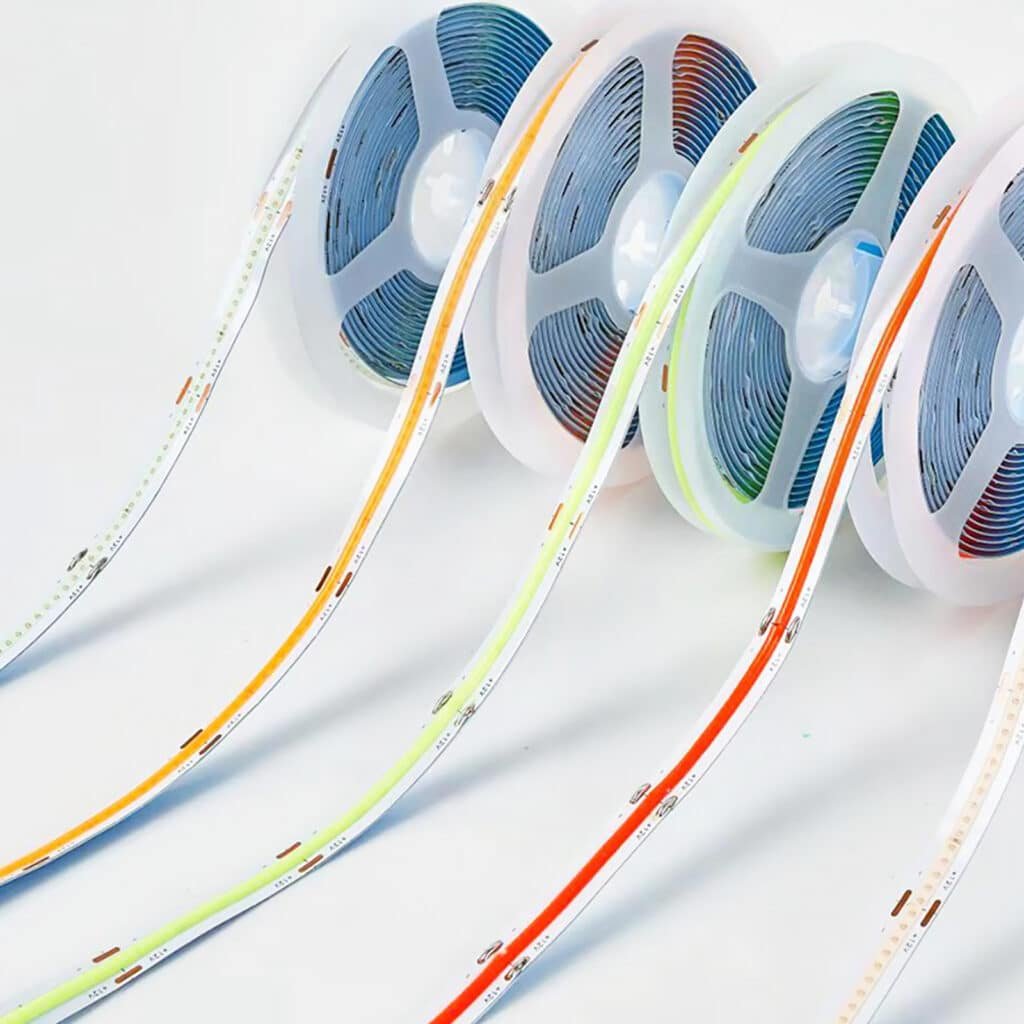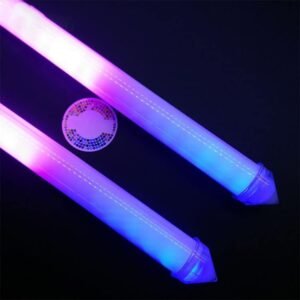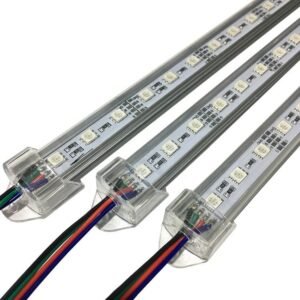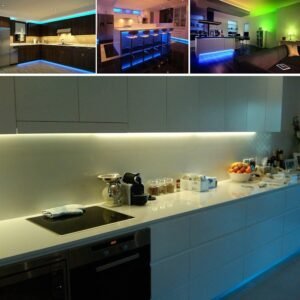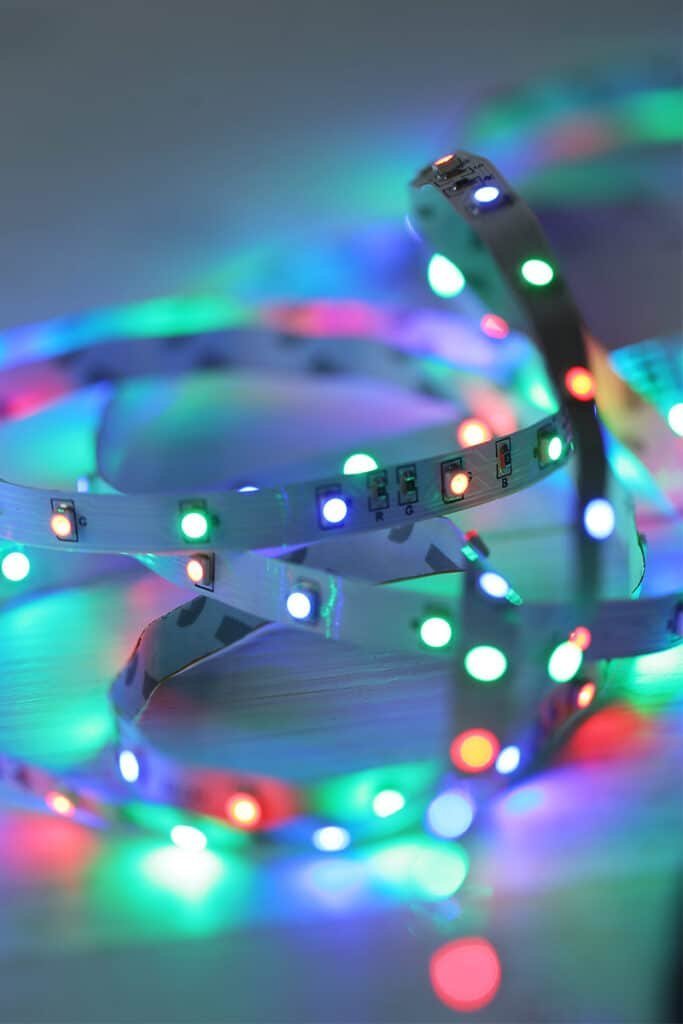Are you searching for an exciting lighting solution to bring an element of brightness and radiance to any space in which you live or work? LED strips offer limitless potential when it comes to creative expression and ambience – from creating an enchanting ambience in your living room or adding visual appeal to kitchen cabinets, these dazzling strips can turn any ordinary space into something extraordinary. In this beginner’s guide we will go through everything necessary in selecting an LED strip suitable for you needs and lifestyle – so come explore! Illuminate!
Brief Introduction To LED Strip Light
What are LED Strips (also referred to as “LED tape lights or ribbon lights”)? LED strips, commonly known as LED tape lights or ribbon lights, are flexible strips of light-emitting diodes (LEDs) mounted onto thin and flexible circuit boards for lighting applications. Available in various lengths, these innovative solutions can easily be cut down to fit any desired size and space requirements.
LED strips come in various color temperatures from warm white to cool white, enabling you to create the ideal ambiance in any space. From creating intimate ambience in your bedroom to brightening up a lively living area – LED strips have you covered for any desired atmosphere or ambiance you may be after.
LED strips have become immensely popular due to their versatility. From using them indoors and outdoors to accent lighting behind TV screens or furniture to lighting staircases or cabinets – their uses are almost limitless!
LED strips not only offer flexibility and versatility, but they are also highly energy efficient. Compared to incandescent bulbs, LEDs consume significantly less power while providing brighter illumination; thus lowering electricity bills while supporting environmental sustainability.
LEDs also boast an impressive lifespan compared to other lighting solutions, typically lasting 50,000+ hours or more depending on usage conditions, easing maintenance concerns.
LED strips have revolutionized lighting design. Their flexibility, versatility, energy efficiency, and longevity make them the ideal solution for creating stunning visual effects and elevating any space – be it at home or commercial environments like restaurants or retail stores.
What are the various types of LED strips?
LED strips come in many varieties, each offering their own distinct features and functionalities. One popular type is flexible LED strip lighting which can be bent to conform to any shape or surface; perfect for adding ambient lighting in spaces like cabinets or behind furniture.
Rigid LED strips feature individual LEDs mounted onto a solid backing, offering greater sturdiness than their flexible counterparts. They’re commonly used to provide task lighting when more concentrated beams of illumination are necessary.
Waterproof LED strips are great for use outdoors or in areas with moisture, such as bathrooms or kitchens, because of their protective coating which protects them from water damage, making them long-term durable solutions.
RGB LED strips feature the flexibility to change their colors via an RGB controller, giving you the power to create dynamic lighting effects and set various moods according to your personal taste.
High-density LED strips contain more LEDs per meter compared to standard density ones, providing brighter illumination across larger areas and are typically found in commercial applications such as retail stores or exhibition booths.
Now that you understand the different types of LED strips available, you can select one which best meets your requirements in terms of flexibility, location usage, color options, brightness levels and overall functionality.
What are the benefits of LED strips?
LED strips offer many advantages that make them an increasingly attractive lighting solution for both residential and commercial lighting needs. One key benefit is energy efficiency – LED strips consume much less electricity compared to traditional lighting options and this can translate to significant cost savings over time.
LED strips’ versatility is unquestionable. Their variety of colors enables you to easily create different lighting effects and ambiances to meet any need or preference, while being easily cut to custom lengths makes them highly adaptable for installation into tight spaces or around unusual shapes.
LED strips also boast an extended lifespan than other lighting fixtures, typically lasting for over 50,000 hours without needing replacement or maintenance – making them a practical solution for both indoor and outdoor applications.
LED strips emit much less heat than traditional light bulbs, contributing to their longevity while simultaneously improving safety by lowering risks of fire or burns.
LED strips also boast environmental advantages as they do not contain harmful substances like mercury found in fluorescent lighting, produce minimal UV radiation and generate less waste due to their longer lifespans.
LED strips represent an excellent investment for anyone seeking efficient and flexible lighting solutions that last over time. With numerous advantages available from their use, these innovative lighting solutions make for smart investments for anyone seeking efficient yet long-term performance solutions.
How to choose an LED strip suited for your needs?
Finding an LED strip that meets your specific needs may seem like a daunting task, but don’t panic! With some guidance you will easily locate the ideal solution. Here are some important considerations when making this important decision.
First and foremost, consider what purpose your LED strip serves – are you seeking accent or task lighting? Different LED strips offer various brightness levels and color temperatures; it is crucial that your selection matches up to what will work for your intended use.
Next, think carefully about the length of an LED strip. Take measurements of where you intend to place it and choose one with enough length for that space – keep in mind that some strips can be cut or extended for added flexibility in installation.
Another critical element is color. LED strips come in various hues such as warm white, cool white, RGB (color-changing), etc. to meet various atmospheres and environments. When selecting a hue that best matches the atmosphere you wish to create, consider which hue works with it best and select accordingly.
Be mindful of IP ratings when placing LED strips outdoors or in wet environments such as bathrooms or kitchens; higher IP ratings indicate greater protection from dust and water ingress.
Consider your power requirements when purchasing an LED strip. Verify the amount of electricity it uses per meter to ensure it matches with your electrical setup.
By considering these factors – purpose, length, color, IP rating and power requirements – selecting an LED strip that suits your needs will become much simpler! Happy lighting!
Installing LED strips is a relatively straightforward process that will provide stylish yet practical illumination to any space. Here is our step-by-step guide on how to do just that.
First, collect all of the materials necessary: LED strips, an LED power supply, connectors (if applicable), mounting clips or adhesive tape and wire cutters or scissors.
Carefully measure the area where you would like to place the LED strip, then cut it using wire cutters or scissors at designated cutting points marked on its strip.
Be certain your power supply meets the voltage needs of your LED strip and connect its positive (+) and negative (-) wires to their respective terminals on the power source.
If you need to connect multiple sections of LED strip, make sure each connection is secure by pressing them together firmly.
Decide whether or not to mount your strips with adhesive tape or mounting clips, and ensure the surface is clean and dry before applying adhesive tape or attaching mounting clips along with LEDs.
Simply plug into a power source, install your LED strips, and enjoy their wonderful illumination!
Always heed manufacturer instructions specific to the brand and type of LED strips you purchase for optimal installation results.
Conclusion
Selecting an LED strip that meets your lighting project doesn’t have to be difficult. By understanding all the types available and taking into account factors like brightness, color temperature, and length as you do your research, finding the ideal solution should not be too daunting of an endeavor.
LED strips offer many advantages over conventional lighting options. They’re energy-efficient, versatile, and come in an assortment of colors and effects to achieve ambient or elegant lighting for home or commercial settings alike. LED strips can help create ambient lighting at home or add a touch of classiness in a commercial space – whatever you need for your own decor needs or the space itself.
LED strips are typically easy to set up. Their adhesive backing and flexible design makes installation straightforward – from under cabinets and staircases, behind TVs or inside shelves – just follow manufacturer’s instructions for proper setup.
Conclusion: investing in quality LED strips is an ideal solution for both residential and commercial use, offering versatility, energy efficiency, longevity and ease of installation – perfect for any number of projects! So take the plunge – explore this world of beautiful illumination!

